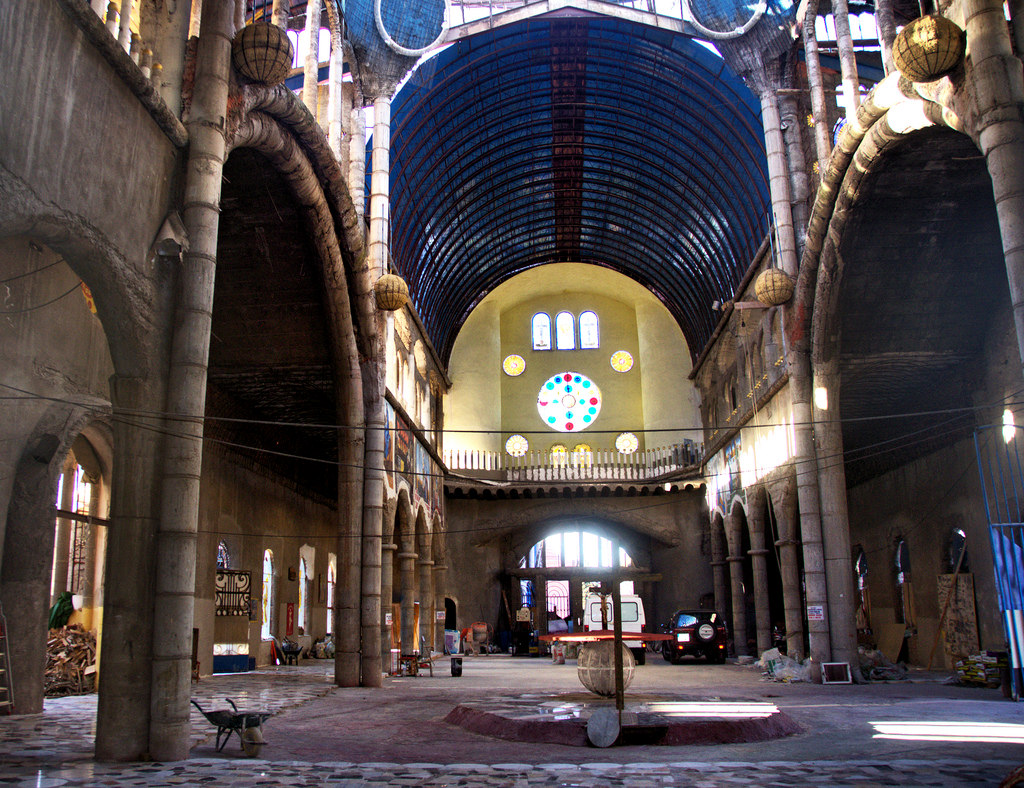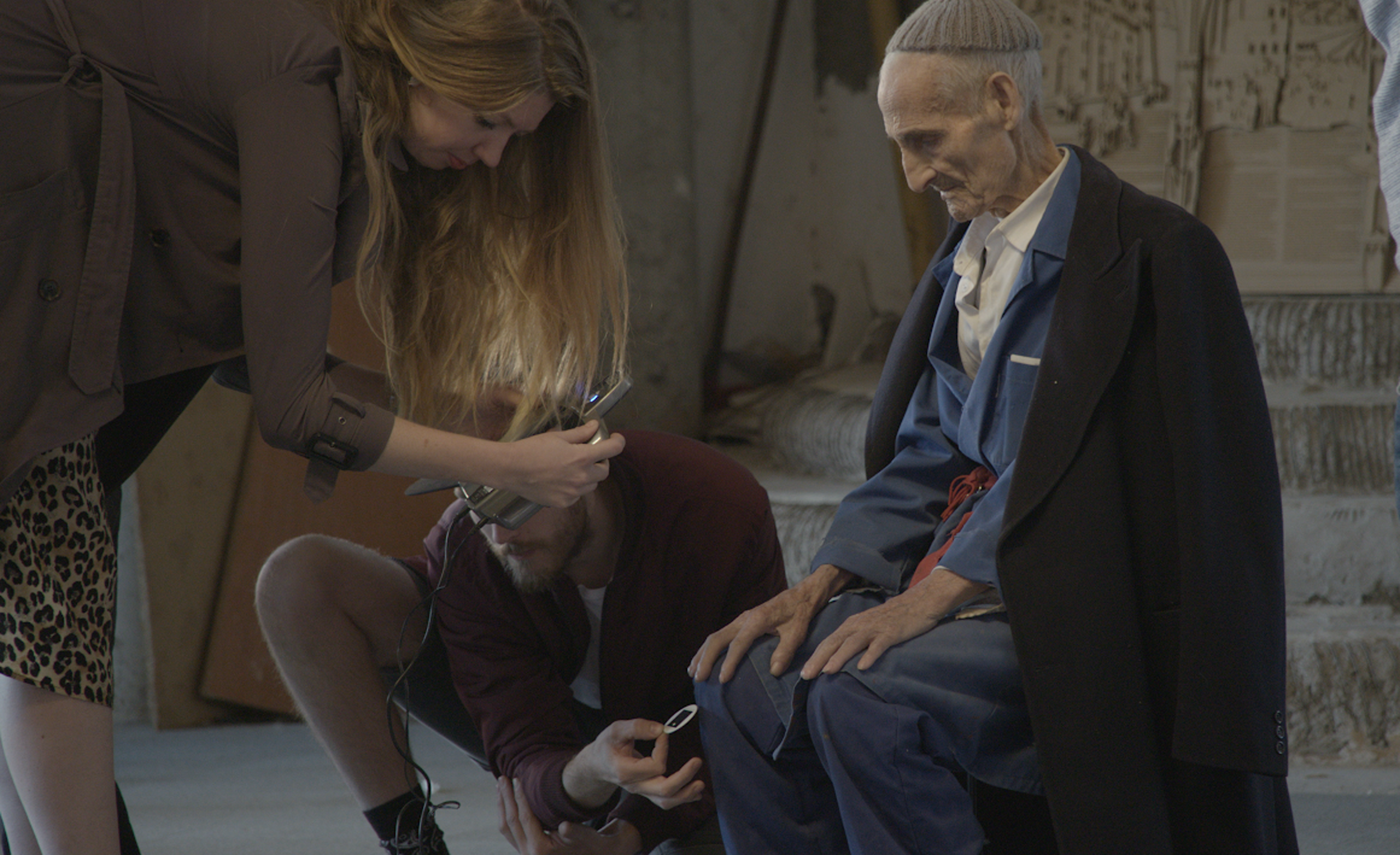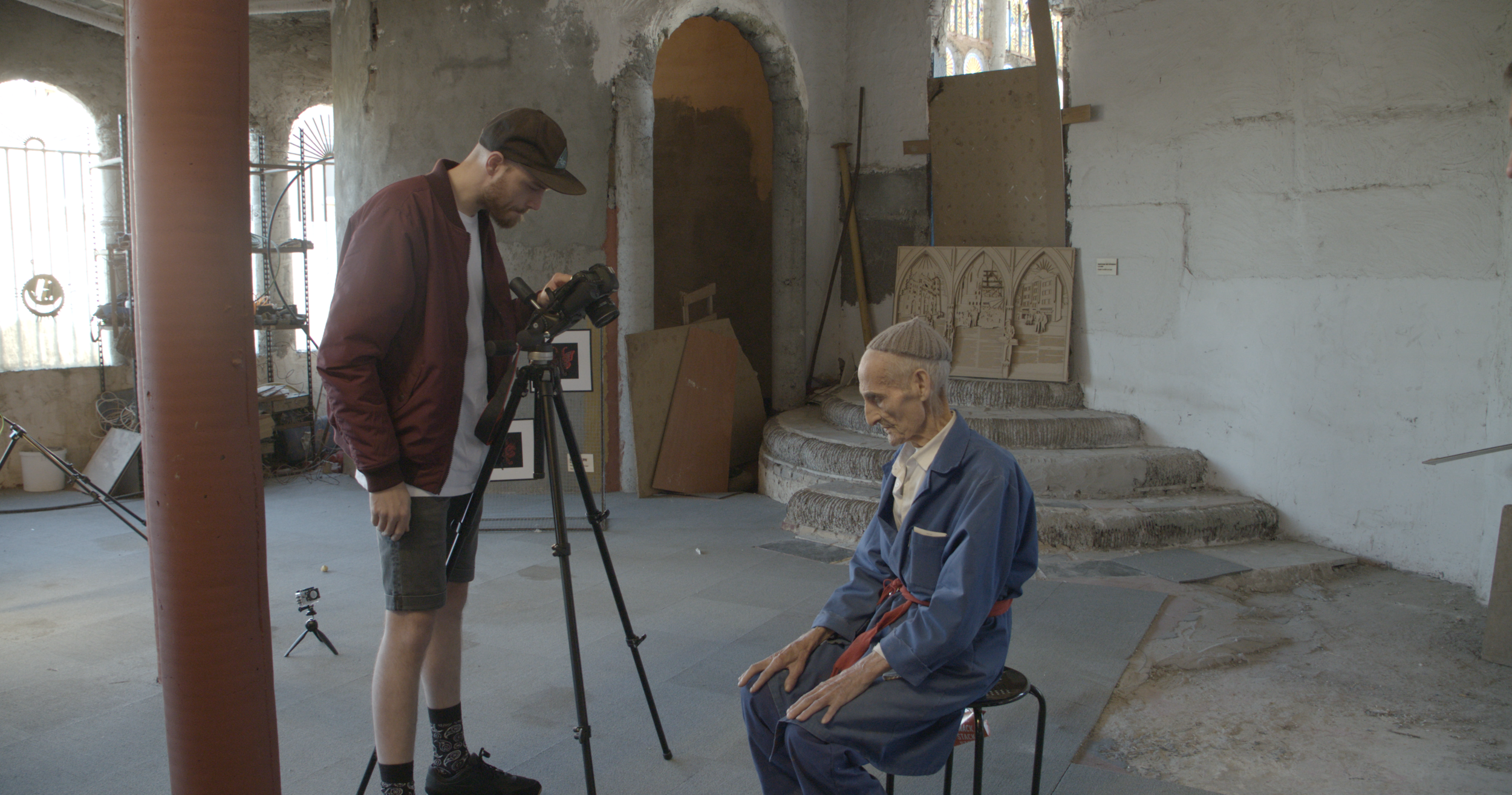On invitation by Filippo Conti from ScanandMake and making art 4.0 - I have 3D scanned the beautiful Cathedral Justo Gallego Martínez in Madrid with my collegue Marcel Kerkmans. The scans will be transformed into new art pieces that you can download and print at the platform of Scanandmake.
(only in Dutch) Ik ben verliefd geworden op deze magische plek. Deze grote kerk net buiten Madrid wordt al meer dan 50 jaar gebouwd door de priester Gusto Gallego Martínez. Hij was een boer en stierenvechter. In 1953 werd hij lid van een trappistenabdij, maar acht jaar later moest hij vertrekken toen bij hem tuberculose werd vastgesteld en zijn gezondheid verslechterde onder het monastieke regime. Hij begon een kathedraal te bouwen op een perceel dat hij had geërfd van zijn ouders. Hij heeft beloofd dat als hij herstelde van de tuberculose, hij een heiligdom zou bouwen ter ere van de Nuestra Señora del Pilar (Vrouwe van de Pilaar), tot wie hij had gebeden.
In der loop der jaren heeft hij zich ontdaan van zijn huis en al zijn bezittingen om al zijn tijd in dit bouwwerk te stoppen. Het is zo verbijsterend om te zien dat deze man 'gewoon' een kerk aan het bouwen is. En ook zonder enig bouwkundig besef zo lijkt het af en toe. Metalen kolommen en balken sluiten niet op elkaar aan. Stukken karton zitten in de plafonds gepropt. Steigers staan vast met geknoopt met een touw. In Nederland zou dit echt niet kunnen. We hebben een van de torens beklommen omdat we toch het dak wilde zien. Vrij riskant maar het uitzicht was magisch. Er nestelen zich katten en vogels in het gebouw en er is geen glas te vinden in ramen of koepels. Wanneer het regent valt al het water naar binnen en wordt door gegraven gleuven in de vloer langzaam afgevoerd de heuvel af. Er staat een hometrainer waar hij af en toe op fietst maar het liefst zit hij toch binnen bij zijn kacheltje. Op een stoel die bestaat uit een halve pallet. Het is heerlijk om te zien dat iemand zo vrij is om op deze manier te bouwen aan zijn eigen kerk. Niet beinvloed door grote architecten, geen weloverwogen beslissingen maar puur -zo lijkt het- op intuitie; omdat hij vind dat ze deze kerk, er zo uit hoort te zien!
De omtrek van het gebouw is 20x50 meter. Het is gebouwd op een oppervlakte van ongeveer 8.000 vierkante meter. Dit omvat een complex samenspel van kloosters, kantoren, onderdak en een bibliotheek. De kathedraal heeft al een koepel (naar het voorbeeld van Sint-Pieters) die circa 40 meter hoog is en ongeveer 12 meter in diameter - en waarvan de stalen pilaren zijn bevestigd met de hulp van zijn zes neefjes met behulp van katrollen. Het merendeel van de bouwmaterialen en gereedschappen die hij gebruikt voor de bouw worden gerecycled. Hij gebruikt zowel alledaagse voorwerpen en overtollige bouwmaterialen geschonken door bouwbedrijven en een nabijgelegen steenfabriek. Zo zijn de kolommen gevormd met oude benzinevaten.
Zijn eigen graf heeft hij al gegraven en bevind zich onder de kerk. Een ruimte met gewelven die alleen wordt gevuld door de intrede van het daglicht. Een crypte waar je in kunt lopen met en waar je een gat in de grond ziet met daarnaast een hoopje zand en een schep..
Wanneer Gusto overlijd is het de bedoeling dat de kerk wordt afgebouwd. Er zijn tekeningen te zien van gepleisterde strakke muren. Ik heb daarom de meest vreemde hoeken in de kerk vastgelegd op mijn scanner. En eveneens zijn handen heb ik vereeuwigd. De handen van god zoals hij zelf zegt; ‘God wil dat ik deze kerk bouw’.
Als of deze plek nog niet magisch genoeg was ontstond er ook nog eens een magische ontmoeting. Terwijl ik de kerk aan het 3D scannen was zag ik een vrouw op een plastic witte stoel zitten, midden in de kerk. De stoel ernaast was leeg en ik vond dat de vrouw verdacht veel leek op Marina Abramovich. Na een paar minuten en nog een paar keer kijken in de richting van dezer vrouw op de stoel besloot ik er toch maar naar toe te lopen. En tot mijn grote verbazing zat daar inderdaad “The goddess of Performance Art’! Ik besloot naast haar te zitten en we hebben een tijdje met elkaar kunnen spreken. Een magische ontmoeting op een magische plek! Heel bijzonder!
Deze plek is echt een aanrader om eens te bezoeken!
Het eind resultaat van dit project zal binnenkort op deze website en op de website van Scanandmake te zien zijn.










